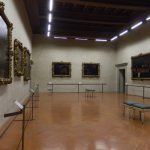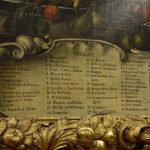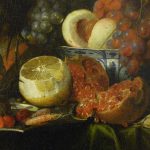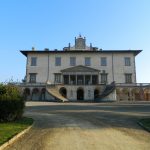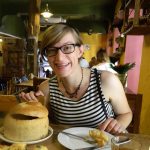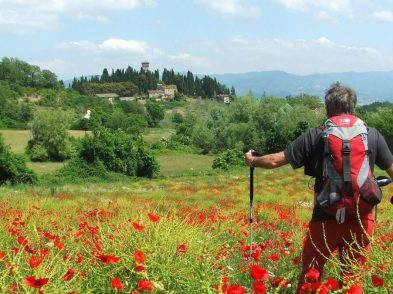- Ph. Samantha Vaughn
- Ph. Samantha Vaughn
- Ph. Samantha Vaughn
- Ph. Samantha Vaughn
- Ph. Samantha Vaughn
- Ph. Samantha Vaughn
- Ph. Samantha Vaughn
- Ph. Samantha Vaughn
- Ph. Samantha Vaughn
- Ph. Samantha Vaughn
- Ph. Samantha Vaughn
The Medici Villa in Poggio a Caiano is an historical gem far removed from the hustle and bustle of Tuscany’s tourist centers. The villa, located in the Province of Prato, is known for its status as a true summer home for the Medici, a place the Renaissance power family could spend their holidays, hunting and entertaining. Its current holdings are only a fraction of what they once were, with newly founded towns popping up throughout the out-of-use areas around the villa, but which were once home to vast acres of vineyards, orchards and groves.
For a true taste of what life was like in the Medici era, the Museo della Natura Morta (The Still-Life Museum) offers a fascinating glimpse into this bygone era. The museum, located on the second floor of the Villa, is dedicated to the subject of nature and all that that entails, from food to flowers, gardens to animals, demonstrating a wide variety and the long development of still life painting throughout the 16th and 17th centuries. The jewel of the collection, however, are the nearly 60 works of art by the Florentine painter Bartolomeo Bimbi, including 12 large-scale paintings depicting the fruits that once grew in the Medici territory. The pieces, together, read like a Pomology textbook. It’s a time capsule when it comes to the history of food, bringing visitors on a journey to the past to discover the vast fruit production that took place throughout the Grand Duchy of Tuscany. This remarkable heritage depicts each type of fruit and their season, accompanied with a detailed legend, including citruses, grapes, pears, peaches, apples, figs, cherries and more.
When observing these paintings, something might go unnoticed at first. What initially seems like a simple, though scientific, painting of 54 apple varieties becomes a lesson in natural selection when you realize that 54 apple varieties no longer exist today. It’s survival of the fittest and modern production in the realest sense. Though the Museo della Natura Morta is hardly a stop on the tourist circuit, its educational role is vital. Indeed, botanists are known to come from near and far to study Bimbi’s paintings. This stunning glimpse into an extinct world resonates immensely on a cultural and educational level, and it is precisely for this that museums must exist. They don’t just preserve our heritage and they certainly don’t just serve as stops on the tourist trail. They are living, breathing institutions that provide a window into the past, if we only truly observe, understand the pieces they contain. If we were to really dive deep into a museum’s piece, we could experience a whole history, a whole culture now lost to us. And in history-rich Tuscany, such possibilities to explore the past are abundant.
Villa Medicea di Poggio a Caiano
Piazza de’ Medici 14
Poggio a Caiano
http://www.comune.poggio-a-caiano.po.it/pagina2244_il-museo-della-natura-morta.html
The museum is currently closed for renovation, but when it reopens, it can be visited on the hour, beginning at 9am, with a pause at 1pm. Reservations are required by calling 055 877012.
Last entrance at:
3pm in January, February, November and December
4pm in March
5pm in April, May, September and October
6pm in June, July and August
Entrance is free
To reach the Villa, take the BluBus #51 from the Firenze V. Fiume stop, in via Nazionale. Buses depart every 15-30 minutes and the journey lasts for about 30 minutes.

